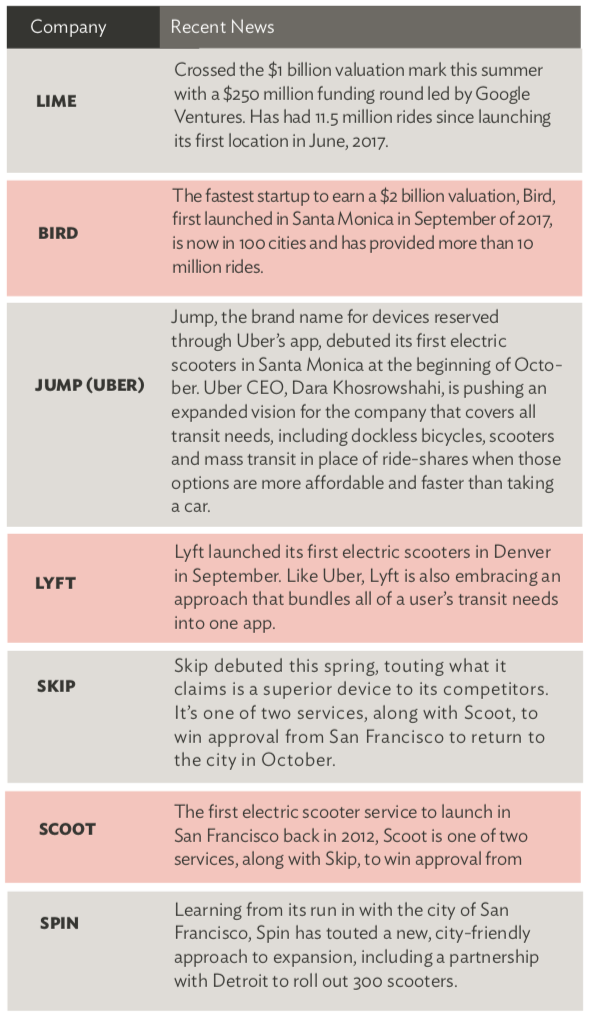ZEITGUIDE TO MICRO-MOBILITY

Microbrewing. Microdosing. Microlearning. To that list we now add micro-mobility.
This catch-all term includes electric scooters, bikes, Segways, hoverboards and their one-wheeled counterparts, which are drawing big money and excitement for their potential to address the “last mile” problem in transit. Think of when that walk from the bus, subway stop or where you parked your car is just too long.
By making it easier to travel that last-mile, micro-mobility devices may make it more convenient to use public transit or at least cut down on those short trips people may otherwise use a car for. (Studies of transit ridership, in fact, show a steep drop off in the percentage of people who use public transport when they live more than half a mile from a stop.)
Most visible, and recently controversial, among micro-mobility devices has been the emergence of the electric scooter. Increasingly common on city streets, they are a bit more high tech than those self-propelled razor scooters that took over middle school hallways across the country back in 2000.
The scooters you see buzzing around today largely come from two Chinese companies, Ninebot, Segway’s Beijing-based parent company, and Xiaomi, best known for controlling a sizable chunk of the smartphone market in China and India. They typically max out at 15 mph and, with no designated parking spot (which makes them ‘dockless’), users use an app to find the nearest scooter, unlock it and pay for their ride.
It’s the brands behind these apps whose names will sound more familiar. Some, like Bird and Lime, have attracted valuations eclipsing $1 billion. Ride-share giants Lyft and Uber are also getting in on the craze with their own dockless electric scooters. (Check out the table at the end of this piece for a breakdown of the main competitors to know.)
However, it’s been a somewhat rocky start for the electric scooter. Taking the usual tech startup approach of “it’s better to ask forgiveness than to ask permission,” Bird, Lime and Spin dropped thousands of new scooters on the streets of San Francisco seemingly overnight earlier this year, which led to complaints from residents over scooters blocking sidewalks or unsafe riders spooking pedestrians (Lime has had two documented rider deaths in the U.S. so far).
In response, San Francisco placed a moratorium on the use of these scooters and called for companies to apply for a pilot program to gradually re-introduce them into the city. The program launched this fall with three companies, Bird, Lime and Spin, notably excluded.
Turns out you still can’t fight city hall, so scooter companies are now taking a collaborative approach with local governments to serve their last-mile needs. So, love them or hate them, expect to see a lot more of these scooters in the coming months—and years.
Want to learn more about ongoing business and cultural transformation?
#GetSmartQuick with ZEITGUIDE 2018.
Inquire about our custom offerings.
Sign up to receive our weekly newsletter.

